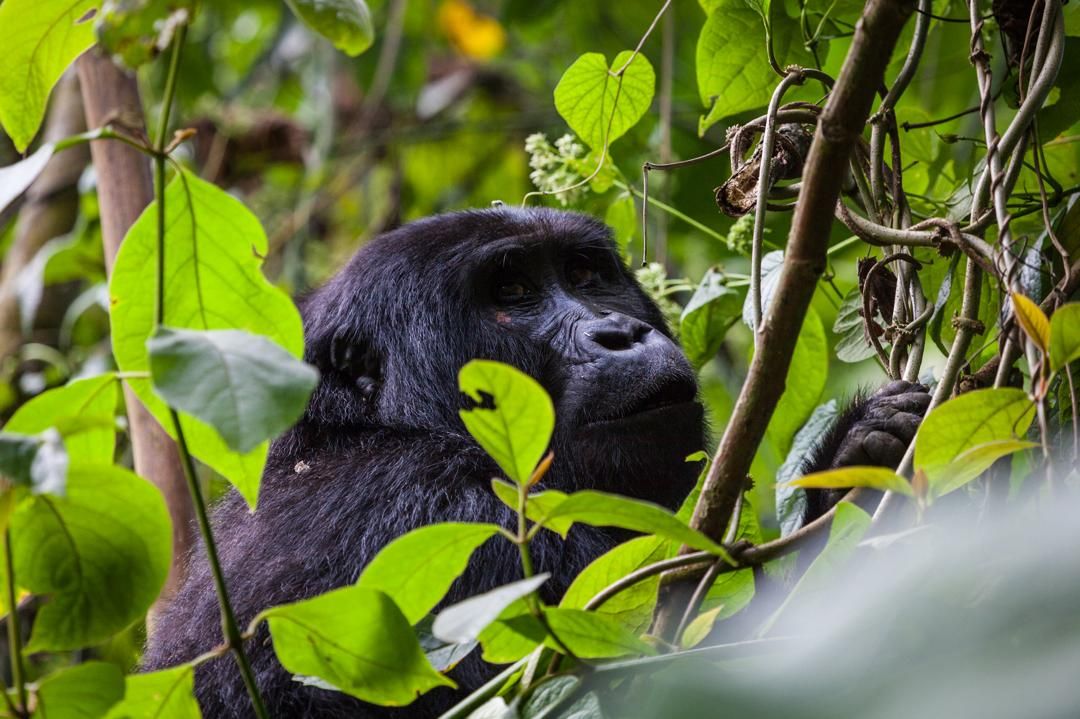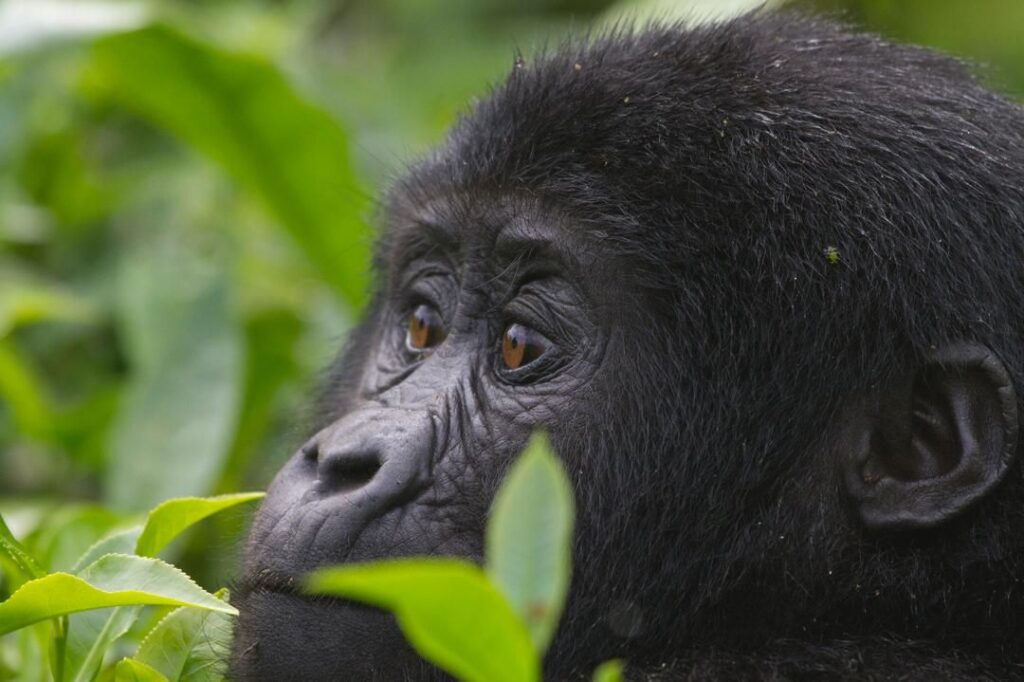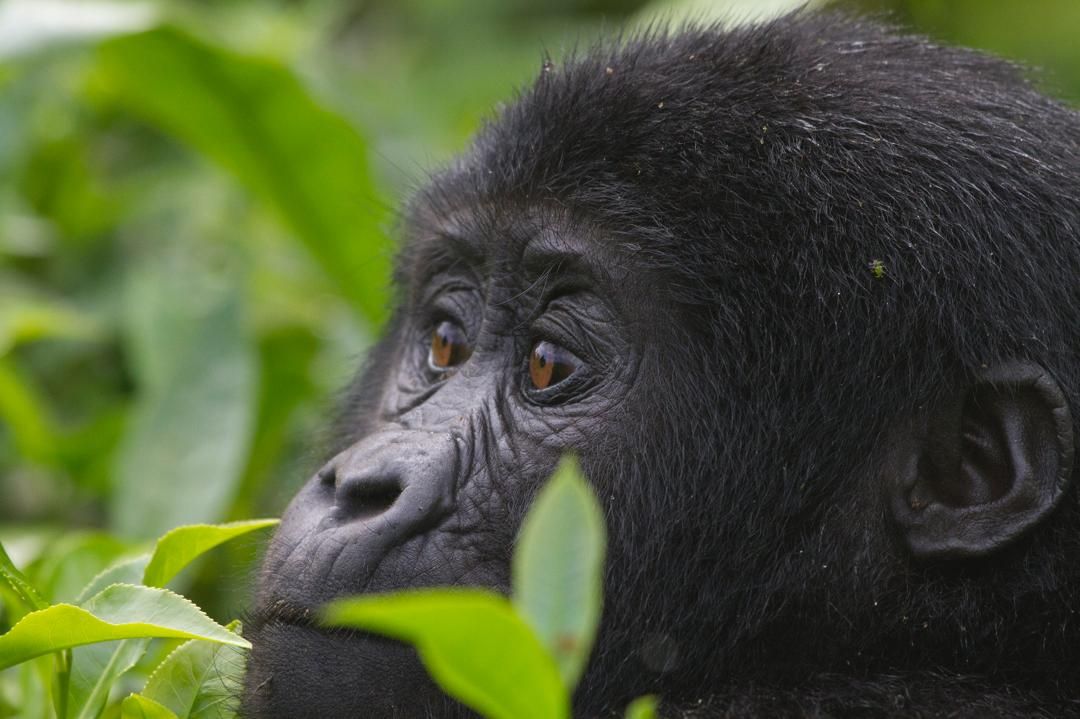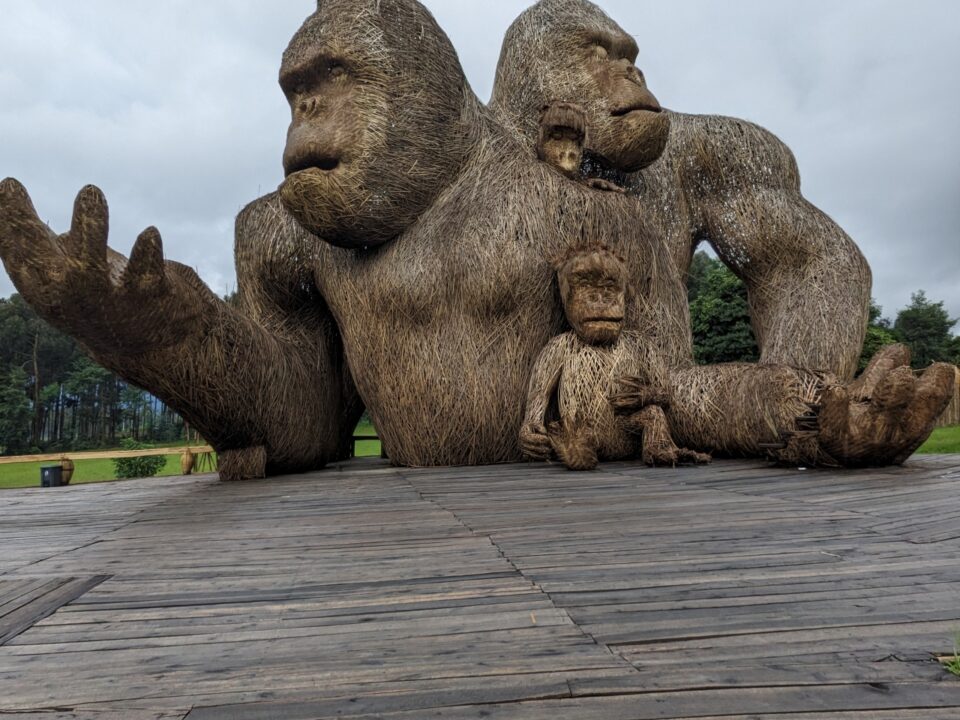
Meet the Gorillas: Nature’s Gentle Giants
May 29, 2025The Gorillas of Uganda: A Majestic and Endangered Treasure

Uganda is home to some of the world’s most majestic and critically endangered creatures: the mountain gorillas. These incredible animals, known for their gentle yet powerful presence, inhabit the lush forests and misty slopes of the Virunga Mountains, which span across Uganda, Rwanda, and the Democratic Republic of Congo. In Uganda, the gorillas are primarily found in two national parks—Bwindi Impenetrable National Park and Mgahinga Gorilla National Park—both of which offer a glimpse into the lives of these remarkable primates and play a crucial role in their conservation.
A Glimpse into Gorilla Life
Mountain gorillas are characterized by their large, muscular bodies, with black fur that helps them thrive in the cool, high-altitude environments of their forested homes. They live in family groups led by a dominant silverback, an adult male whose silver-gray fur on his back gives him his name. These groups are typically composed of females, their offspring, and sometimes other males. Mountain gorillas are primarily herbivores, feeding on leaves, stems, fruit, and bamboo shoots, which they expertly forage from the forest floor.
These intelligent creatures are social and often display behaviors such as grooming, playing, and interacting with each other. Their eyes, full of expression, communicate emotions ranging from curiosity to contentment. Observing these interactions in the wild is a humbling experience, reminding us of the deep emotional bonds shared between these animals.
The Importance of Conservation
Mountain gorillas are listed as “endangered” on the IUCN Red List of Threatened Species, and while their numbers have made a slow recovery in recent years, they are still at risk. In the past, the gorilla population faced threats such as poaching, habitat loss, disease transmission from humans, and political instability in the region. However, conservation efforts, particularly those spearheaded by local communities, governments, and international organizations, have played a pivotal role in turning the tide.
In Uganda, efforts to protect mountain gorillas have been a success, with the population steadily increasing. According to the latest census, there are now over 1,000 mountain gorillas left in the wild, with more than half of them living in Uganda. These efforts are supported by tourism, which generates revenue for park management, local communities, and further conservation initiatives. Gorilla trekking, where visitors can see gorillas in their natural habitat, has become a major eco-tourism attraction in Uganda. This experience not only fosters a deeper appreciation for these animals but also helps ensure their survival by directly funding conservation programs.
Gorilla Trekking in Uganda
Gorilla trekking is one of the most unique wildlife experiences in the world. Visitors to Uganda can embark on a trek through the dense forests of Bwindi or Mgahinga, guided by experienced trackers and rangers, who know the gorillas’ behavior and movement patterns. The trek itself is a thrilling adventure, as the forest can be challenging to navigate, with steep slopes and thick vegetation. But the reward at the end is unparalleled—the chance to sit just meters away from a family of mountain gorillas, watching them go about their daily activities.
The gorillas are accustomed to human presence and often allow trekkers to observe them quietly. Spending time with these animals in their natural habitat is an unforgettable experience that fosters a sense of connection with wildlife and underscores the importance of protecting these magnificent creatures.
Community and Conservation
Conservation efforts in Uganda have not only focused on the gorillas but also on improving the livelihoods of local communities. Sustainable tourism has created jobs for locals as park rangers, guides, and in hospitality, while also funding infrastructure and education programs. Moreover, local farmers have been involved in conservation by participating in initiatives such as beekeeping, which helps prevent human-wildlife conflicts, and planting trees to restore degraded lands.
By integrating local communities into conservation programs, Uganda has created a model for how wildlife protection and human development can go hand in hand. This approach has helped to reduce poaching, improve the human-wildlife relationship, and ensure that the gorillas are safeguarded for generations to come.
The Future of Uganda’s Gorillas
The future of Uganda’s mountain gorillas looks promising, but continued vigilance is essential. As the gorilla population grows, so do the challenges—ensuring there is enough space for these animals to roam, safeguarding their health, and preventing disease outbreaks remain top priorities. Additionally, climate change and habitat encroachment pose ongoing threats that must be addressed.
But with continued dedication, investment in conservation, and responsible tourism, the gorillas of Uganda will remain a symbol of resilience and hope. They are not just an iconic species but a reminder of the beauty and importance of preserving our planet’s biodiversity.
In Uganda, the story of the gorillas is one of hope—a narrative that proves that when we work together, we can protect the world’s most vulnerable species and ensure that these incredible animals thrive for generations to come.



